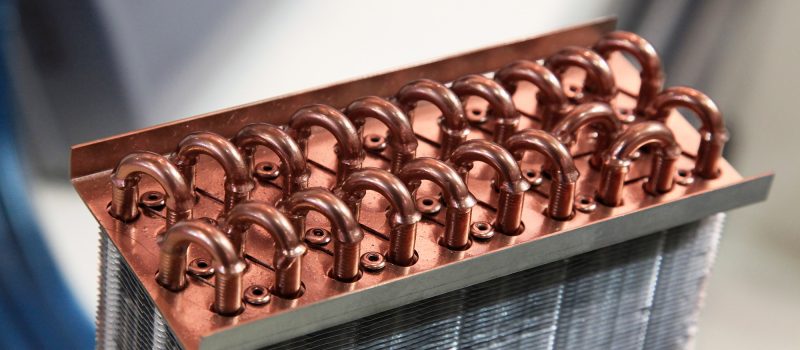Has your home’s air conditioning unit or been acting up lately? Are you having trouble finding the root of the problem?
It may be your heat exchanger. A heat exchanger is a fundamental piece of an air conditioning unit. This is what transfers heat either in the form of air or thermal fluids from one part of the HVAC unit to another. When this part of a unit goes out, it doesn’t look good for your home’s heating needs or cooling solutions.
As such, it’s important to know how a heat exchanger works.
The most basic thing to understand about heat exchangers is the way they produce and transfer heat. There are 3 systems a heat exchanger may use to do this.
Each of the 3 is explained below.
1. Conduction
Conduction heating is the process of generating heat by having two different materials at different temperatures make contact. When they touch, the hotter material heats the other. This can be done with metals or with liquids.
2. Convection
Up next is convection heat transfer.
This happens when fluids move within a certain space and as they do so, they transfer thermal energy from one area to another. They take the heat with them which creates a cooling effect on the remaining area.
This occurs naturally but it can also be created, like when fans are placed into air conditioning units. The fans generate movement which allows the conduction of liquids in the home’s HVAC to take place. This keeps your home’s AC working properly and prevents damages.
3. Radiation
Last but not least is radiation.
The first thing that comes to mind when most people hear “radiation” and “heat” in the same sentence is solar energy. Solar energy is the use of the sun’s rays to create electricity in residential and commercial properties.
However, this isn’t the only form of radiation that can be applied to a heat exchanger. Heat exchangers can use pretty much any form of radiation so long as there are enough electromagnetic waves being emitted.
Everything on earth produces these waves. But, there are certain objects that create more electromagnetic waves than others. Prime examples include the sun, radioactive waste or chemical materials, and x-ray machines.
As far as air conditioning and heat exchangers go, a heat exchanger that operates on radiation most likely relies on heat to do so.
Learn How a Heat Exchanger Works with the Help of a Professional
It’s one thing to understand the basics of how a heat exchanger works and another to understand the intricate design and function of your home’s heat exchanger.
These HVAC pieces can come in many forms. Some are made of coils while others look like tiny little vents. They may be made entirely of metal or they may have liquid components.
Either way, your best shot at identifying a problem with your heat exchanger and fixing it is to call an HVAC professional. Click here to search for such services in your local area!

